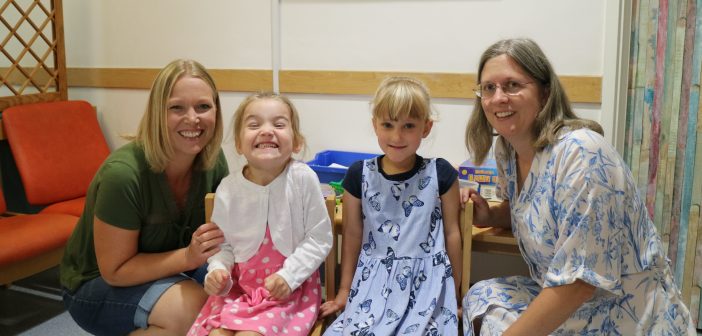Nine out of 10 children treated for leukaemia at Poole Hospital will beat the disease, thanks to a systematic approach to treatment. This includes a complex chemotherapy regimen, protective antibiotic schedule and supportive blood and platelet transfusions.
The success of leukaemia treatment trials allows clinicians to look beyond improving survival, to reduce side effects that can impact growth, brain development, bone changes, and heart and kidney problems.
The hospital’s paediatric oncology department coordinates its treatments with Southampton General Hospital, who have dedicated paediatric oncologists who specialise in children’s cancer. However, a lot of the service is now undertaken at Poole Hospital.
Two children who have benefited from the developments are Caitlin Green and Freya Barry (pictured above), who were diagnosed with acute lymphoblastic leukaemia in 2015. They are now both in remission.
Nichola Green, Caitlin’s mother, says she is very grateful for the high standard of care her daughter received:
“We had a wonderful relationship with the doctors and nurses who took time to sit with us on both the good and the bad days, and do little things like bringing you a coffee when you haven’t slept.”
Mark Tighe, paediatric consultant says: “There have been huge leaps and bounds nationally in the treatment of leukaemia for children – deaths are now rare and significant side effects are decreasing”.
Know the signs of leukaemia:
- Easy bruising
- Nose bleeds
- Rashes that don’t go away when pressed
- A persistent limp
- Pale skin
- Unexpected weight loss
- New night sweats
- Swollen glands greater than two centimetres in size
If your child is displaying any of these symptoms, contact your GP, who can refer them for further tests if they feel it necessary.


